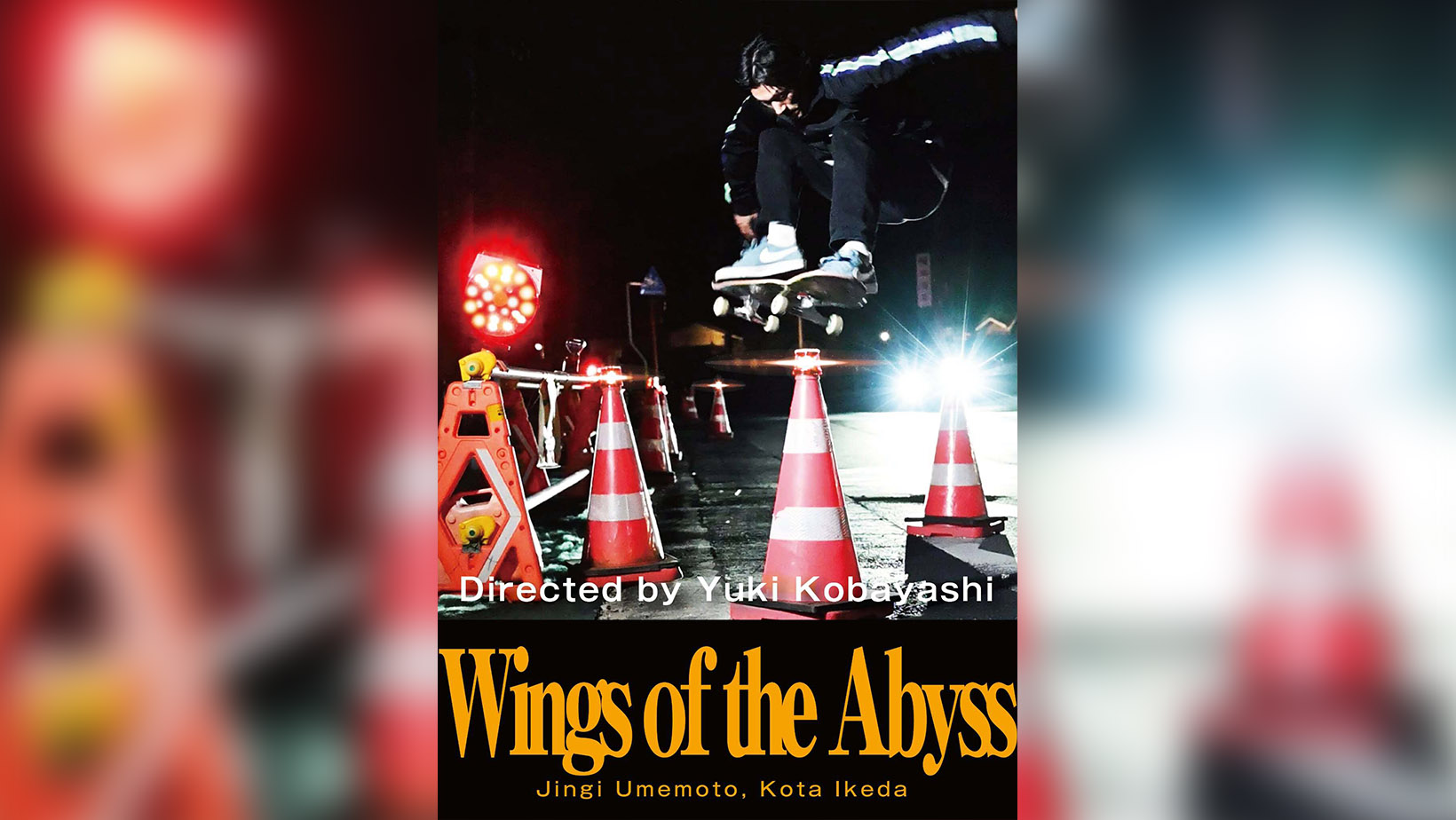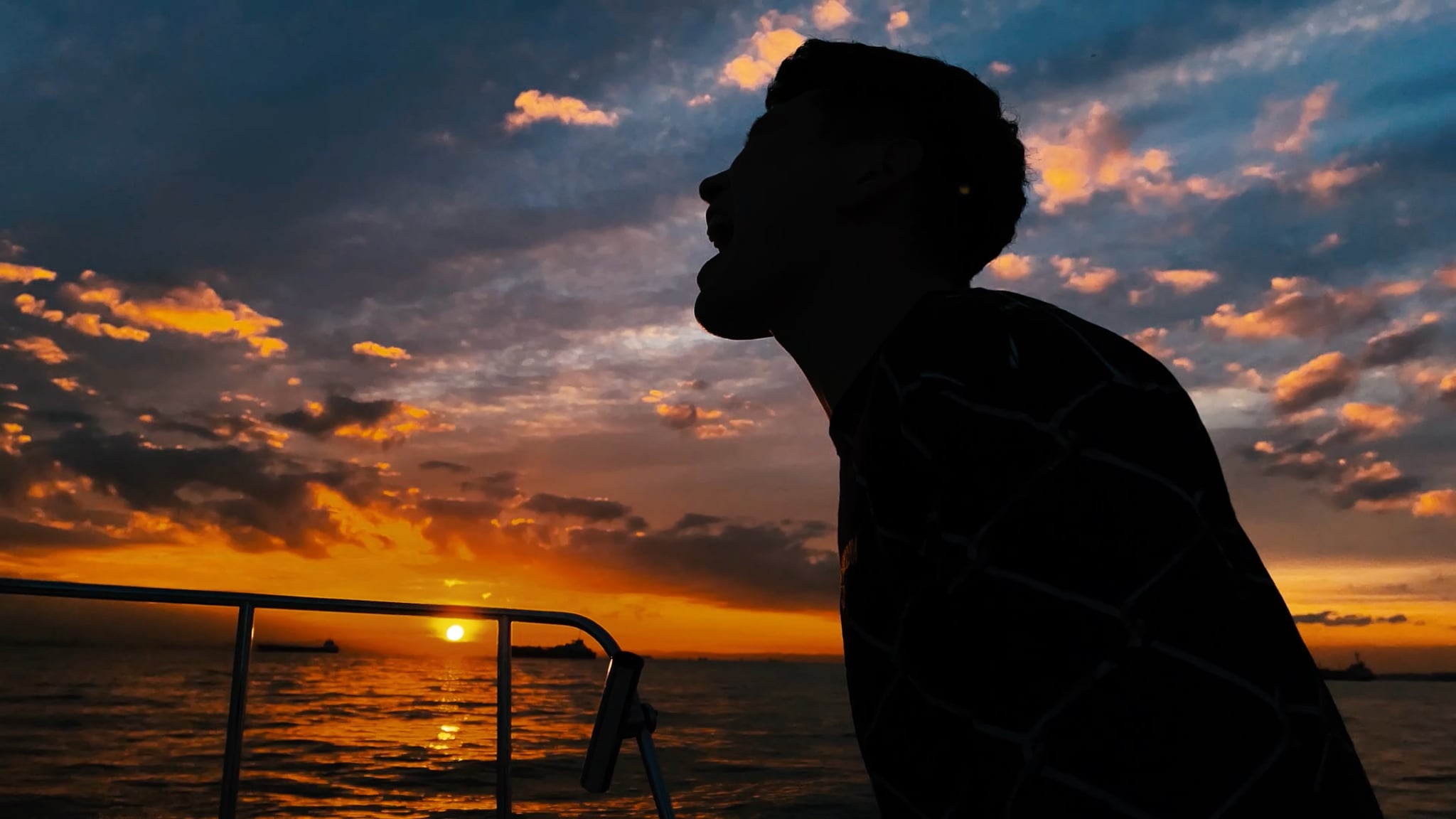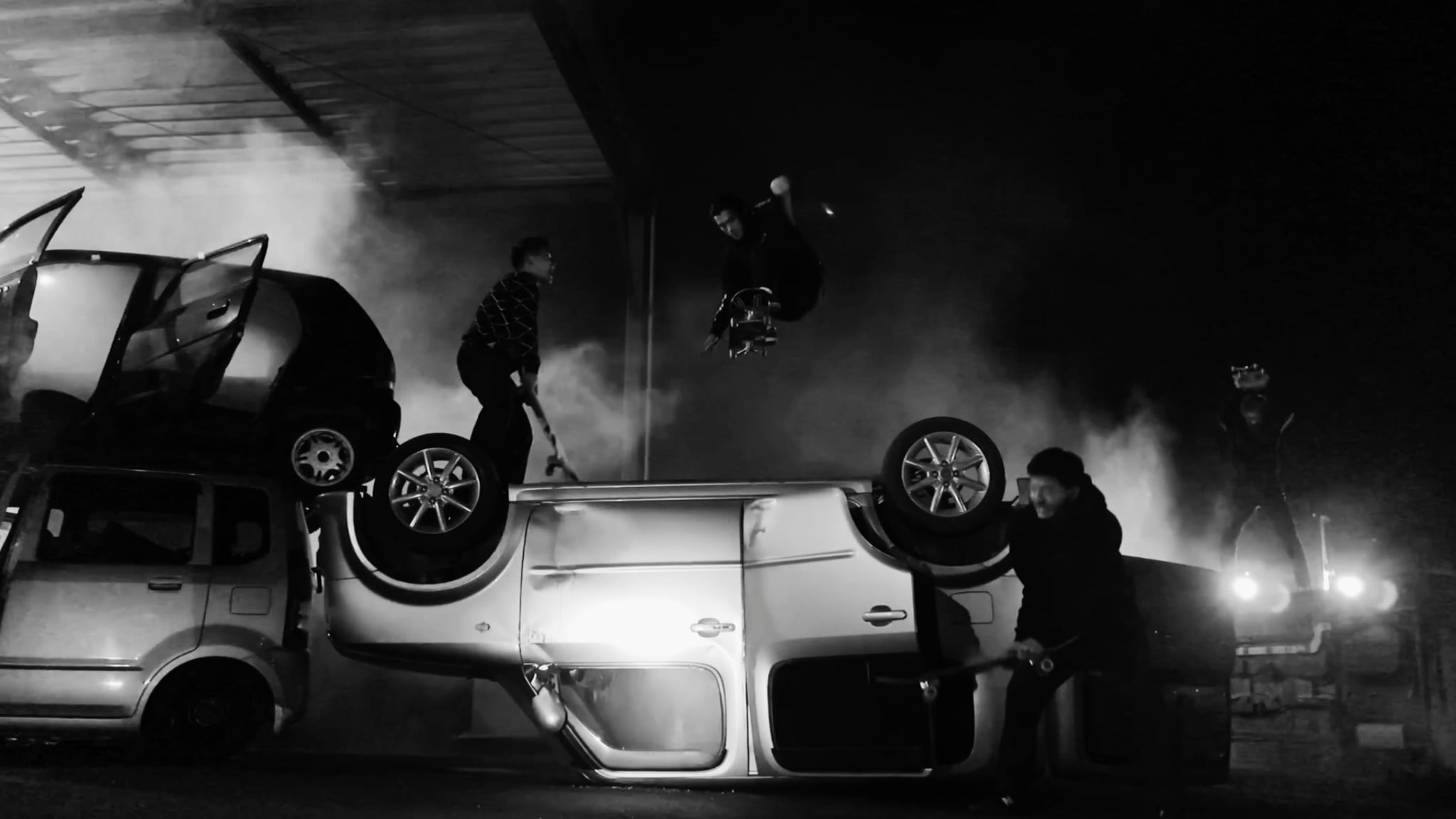
Wings of the Abyss is a 2025 Japanese crime thriller written and directed by Yuki Kobayashi. The director is known for the action thriller Kamikaze Cowboy (2015), the comedy-drama Death Row Family (2017), and the sci-fi action thriller Rise of the Machine Girls (2019).
A young intern, Jin, who loves skateboarding, struggles to balance his job and hobby. However, when he discovers that the company he works for is operated by a scammer who has vanished, he becomes a target for local yakuza seeking to reclaim their monetary losses.

Exploring themes of rebellion, counterculture, and the stresses of modern-day life, Wings of the Abyss strongly focuses on the human element of society, especially those seen to exist on the outskirts of social acceptability. While our group of protagonists is only interested in indulging in their shared hobby, the societal push-back received from the public far exceeds what the situation calls for–resulting in harassment ranging from verbal abuse to assault, like having a glass bottle smashed over Jin’s head. While this would seemingly be an exaggerated view of the country’s contempt for the sport, with the popularity of skating growing significantly since its feature in the 2020 Tokyo Olympics, the general detestation felt towards skaters has only strengthened since then.
Furthermore, as the narrative progresses from the light-hearted drama of its beginning to a kinetic crime thriller with the introduction of some key players. Both the group of yakuza eagerly hunting their money from Jin’s crooked boss, and the highly choreographed martial arts of the “white duo”–a pair of vigilantes who have taken it upon themselves to rid the streets of skaters through violence–plunges the audience into its elements of high-octane fight choreography and the murkey grey area of antisocial businesses.

Employing an impressive technical level of cinematography, Wings of the Abyss delivers an exceptional visual design that is prevalent throughout. Focusing on extended shots, many scenes are shot through dynamic, non-fixed angles–relying on panning, tilts, and dolly movement to frame each scene. This design adds a highly personable energy to the audience’s perspective, with the cameraman being an active part of the story rather than a passive observer–especially when using a skateboard as a dolly to keep along with the protagonists.
Furthermore, the film implements an atypical approach to framing. Featuring numerous high-angle shots of the protagonists, this elevated angle delivers the disdain Japanese society feels for those part of this counterculture are subject to. In addition, shots partially obscured by the foreground, such as chain link fences, create a purposeful barrier between the audience and protagonists, denoting them to outsiders looking in.

Featuring a diverse cast, the performances in the film feel natural throughout. The protagonists share an authentic friendship instead of appearing as a troupe of actors playing roles. Their camaraderie, showcased while street skating through inner-city Tokyo, effectively conveys the strong bond felt by the group to the audience. Furthermore, since skating is a significant element of the film, all tricks were performed by the actors themselves. Although they are not professional skaters, they still demonstrate notable talent.
Similar to director Shinji Sôma’s philosophy of “Humanity observing humanity”, Wings of the Abyss delivers a striking character study into the depths of counterculture, as well as provides a riveting blend of crime thriller and comedy drama. With fantastic performances from the entire cast, a technical level of cinematography, and excellent direction from Yuki Kobayashi, the film is an adroit take on modern-day rebellion in multiple forms.

More Film Reviews
Island of Horrors (1970) Film Review – Surviving Decapitation Island
With the turn of a new decade, new opportunities were sought by film studio Daiei. In 1970, Daiei on the verge of bankruptcy, entered into a partnership with fellow struggling…
Secrets of a Woman’s Prison (1968) Film Review – The Origin of Japanese Women-in-Prison Cinema
Despite being one of Japan’s biggest film studios throughout the late 40s and 50s during the golden age of Japanese cinema, Daiei was struggling by the mid-60s and had to…
The Latent Image (2022) Film Review – British Horror Thriller
The Latent Image is a 2022 British gay horror mystery, written and directed by Alexander McGregor Birrell with additional writing from the film’s main star, Joshua Tonks. Beginning his career…
Two Sisters Film Review – Psychological Horror Among Siblings
“The reunion of two sisters after one of them has just been released from a mental institution is marred when a stay at their abandoned childhood home threatens to reveal…
The Sandman Series 1 Review (2022) – A Neil-Perfect Season
Let’s jump straight to the point for once: Netflix has largely succeeded in adapting Neil Gaiman’s The Sandman, a popular and critically-acclaimed graphic novel which had been deemed “unfilmable”. With…
Book of Monsters (2018) Film Review: A Gore-Soaked Indie Gem
I adore independent film, escaping the usual clichés that are all too common in Hollywood. Consequently, small, independent companies are a good way to experience a fresh take on film…

Hey there, I’m Jim and I’m located in London, UK. I am a Writer and Managing Director here at Grimoire of Horror. A lifelong love of horror and writing has led me down this rabbit hole, allowing me to meet many amazing people and experience some truly original artwork. I specialise in world cinema, manga/graphic novels, and video games but will sometime traverse into the unknown in search of adventure.






